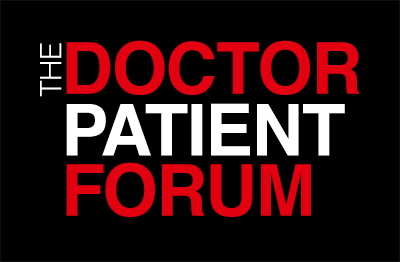- Details
- Hits: 1472
- BSC - Board of Scientific Counselors
- CDC - Center for Disease Control and Prevention
- CDC GL - CDC Guidelines (usually referring to the 2016 or 2022 guidelines for opioid prescribing).
- CNCP - Chronic non-cancer pain
- CPP - Chronic Pain Patient
- DPP - Don't Punish Pain
- EHR - Electronic Health Record
- HHS - Health and Human Services
- HR - Harm Reduction
- LTOT - Long-term opioid therapy
- MME - Morphine Milligram Equivalent
- OIH/OIHA - Opioid-induced hyperalgesia
- ORRP - Opioid Rapid Response Program
- ORT - Opioid Risk Tool
- PDMP/PMP - Prescription Drug Monitoring Program
- PROP - Health Professionals for Responsible Opioid Prescribing
- Details
- Hits: 2018
PDMP (Prescription Drug Monitoring Program) is a data base that records all controlled substance prescriptions including opioids, sleeping pills, ADHD medication, muscle relaxers, among some others. The first PDMP was developed in New York in 1918. It is now in all 50 states (as of 2021). These data bases have been funded by the Department of Justice (to the tune of hundreds of millions of dollars).
We've seen several goals listed for the PDMP, but the most common is to give healthcare professionals real-time access to your prescription history so they can make sure you're not "doctor shopping," or otherwise abusing your medication. Each state runs its own PDMP, usually by the HHS (Dept. of Health and Human Services). Thanks to a company called Appriss, PDMP's are now interconnected between states.
Some common questions answered:
- Who enters your information into the PDMP? The pharmacist/pharmacy technician.
- Do you have real-time access to your PDMP report? No. Each state has different rules. Contact your HHS and ask how you can see your PDMP history and how to fix any errors.
- Who has access to your PDMP? Pharmacies, doctors, hospitals, and in some states veterinarians and law enforcement.
- What's a risk score in the PDMP? This brings us to Narxcare. PDMP pulls from many different data bases (criminal history, financial history, school grades, Electronic Health Records, etc.) and mixes it all with your prescription history to spit out a risk score as to whether your doctor should prescribe to you or not. See the FAQ "What is Narxcare?" for a more detailed explanation.
Still interested in reading more about PDMP? Here are a couple of articles we recommend:
This study finds that Prescription Drug Monitoring Programs fail to reduce opioid overdoses and increase the use of black market opioids- Details
- Hits: 3550
NarxCare, a product of a company called Bamboo Health, is a proprietary data analytics program. It uses up to 70 data points (that only Bamboo Health knows) and mixes them with your PDMP (prescription history) to assign four 3-digit scores letting your doctor or pharmacy know if you have a high risk of abuse or overdose. There is a Narcotic Score, a Stimulant Score, and a Sedative Score, and an Overdose Risk Score (ORS). According to Bamboo Health, "NarxCare aids care teams in clinical decision making, provides support to help prevent or manage substance use disorder, and empowers states with the comprehensive platform they need to take the next step in the battle against prescription drug addiction." Essentially, NarxCare pulls data from multiple state registries looking for red flags of drug seeking behavior.
The three categories of prescription medication it looks at are narcotics (opioids), stimulants (ADHD meds) and sedatives (benzos, sleeping meds, etc.). "The NarxCare report identifies risk factors with interactive visualizations, as well as an Rx Graph, and a set of scores that numerically correspond to the patient’s PDMP data." Although Appriss states on their website that their product shouldn't be used by itself to make medical decisions, that's not what's actually happening. As shown in this NarxCare article, patients are being denied medication or even being dismissed from a medical practice based on a NarxCare score alone.
Some of the risk factors used in the proprietary algorithm are:
- The number of prescribers a patient has had in a two-year period.
- The number of pharmacies a patient used in a two-year period.
- The dosage (MME-Milligram Morphine Equivalent).
- Amount of other medications that may increase potency of other medications.
- Number of times prescriptions overlap with prescriptions from other providers
- Any Mental Health Diagnosis
- Distance from patient to doctor
Nobody knows (except Bamboo health) exactly what goes into the ORS (Overdose Risk Score). Some of the factors we've found listed are criminal history, diagnoses in your EHR (Electronic Health Record) including mental health diagnosis (such as depression or PTSD), distance patient drives to the doctor, and diagnosis of sleep apnea.
What are some of the problems with NarxCare? Why isn't it a good thing?
- There is no room for context. What does this mean? As mentioned above, if someone has more than one prescriber within a two-year period, that will increase the ORS. But, there isn't a way to include an explanation such as if a patient moves, if a patient has multiple surgeries within that time period, or if a patient's doctor retires causing the need for a new physician.
- A patient's pet's prescription history is included. This means if a patient has surgery and if her pet has surgery, it appears as though the patient is getting prescriptions from more than one doctor.
- The NarxCare algorithm has never been externally validated. What does this mean? Essentially, it means the results of the study the algorithm is based on haven't been proven to apply to people outside of the study. Yet, that's exactly what they are doing. They are calling it evidence-based even though it is not.
- If someone is prescribed 90 MME (Morphine Milligram Equivalent) or more, the NarxCare score is automatically at the to 1% of all Overdose Risk Scores. Why is this bad? Well, the whole concept of MME and arbitrary thresholds such as 90 MME are flawed and not based in science.
- The NarxCare algorithm has inherent gender and racial bias. How? Since they use criminal history, it is racially biased. Since more it women tend to have mental health diagnoses such as PTSD due to trauma, it automatically is biased against women. We have heard stories of women who have been denied prescription opioids due to having been a survivor of sexual abuse.
As summarized in this Wired article, the entire concept of NarxCare is flawed and is flagging patients who shouldn't be flagged. "According to one study, 20 percent of the patients who are most likely to be flagged as doctor-shoppers actually have cancer, which often requires seeing multiple specialists. And many of the official red flags that increase a person's risk scores are simply attributes of the most vulnerable and medically complex patients, sometimes causing those groups to be denied opioid pain treatment."
Many people are fighting against the use of NarxCare. Almost every state uses Aprriss' PDMP platform and roughly 25 states in USA use NarxCare. Contact your local Department of Health to find out if your state uses it. For more information about Narxcare, we've included links to a few articles.
Bamboo Health announced an updated ORS model in November of 2023. Here is a one-page summary they provided.
What Every Patient Should Know About NarxCare
The flawed study NarxCare is based on
DPF Podcast PDMP/NarxCare Part 1, Part 2, Part 3, Part 4
Medical Journal Article - 11/14/23 - Paths Forward for Clinicians Amidst the Rise of Unregulated Clinical Decision Support Software: Our Perspective on NarxCare
Image of dismissal letter to patient from provider due to NarxCare












